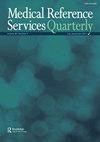眼见为实:通过图书馆教学引导视觉健康误导。
Q1 Social Sciences
Medical Reference Services Quarterly
Pub Date : 2024-01-01
Epub Date: 2024-01-18
DOI:10.1080/02763869.2024.2290963
引用次数: 0
摘要
视觉误导由于其潜在的说服力和在社交媒体上的快速传播,给公共卫生带来了独特的挑战。在这篇文章中,匹兹堡大学健康科学图书馆系统的图书馆员指出了四种视觉健康误导信息:误导性图表、断章取义的视觉效果、科学出版物中的图像处理以及人工智能生成的图像和视频。为了让校园的健康科学读者和更广泛的社区了解这些主题,我们开发了一系列有关视觉健康误导信息的指导。我们介绍了我们的策略,并为针对不同受众实施视觉误导计划提供了建议。本文章由计算机程序翻译,如有差异,请以英文原文为准。
When Seeing Isn't Believing: Navigating Visual Health Misinformation through Library Instruction.
Visual misinformation poses unique challenges to public health due to its potential for persuasiveness and rapid spread on social media. In this article, librarians at the University of Pittsburgh Health Sciences Library System identify four types of visual health misinformation: misleading graphs and charts, out of context visuals, image manipulation in scientific publications, and AI-generated images and videos. To educate our campus's health sciences audience and wider community on these topics, we have developed a range of instruction about visual health misinformation. We describe our strategies and provide suggestions for implementing visual misinformation programming for a variety of audiences.
求助全文
通过发布文献求助,成功后即可免费获取论文全文。
去求助
来源期刊

Medical Reference Services Quarterly
Social Sciences-Library and Information Sciences
CiteScore
4.00
自引率
0.00%
发文量
33
期刊介绍:
This highly acclaimed, peer-reviewed journal is an essential working tool for medical and health sciences librarians. For those professionals who provide reference and public services to health sciences personnel in clinical, educational, or research settings, Medical Reference Services Quarterly covers topics of current interest and practical value in the areas of reference in medicine and related specialties, the biomedical sciences, nursing, and allied health. This exciting and comprehensive resource regularly publishes brief practice-oriented articles relating to medical reference services, with an emphasis on user education, database searching, and electronic information. Two columns feature the Internet and informatics education.
 求助内容:
求助内容: 应助结果提醒方式:
应助结果提醒方式:


